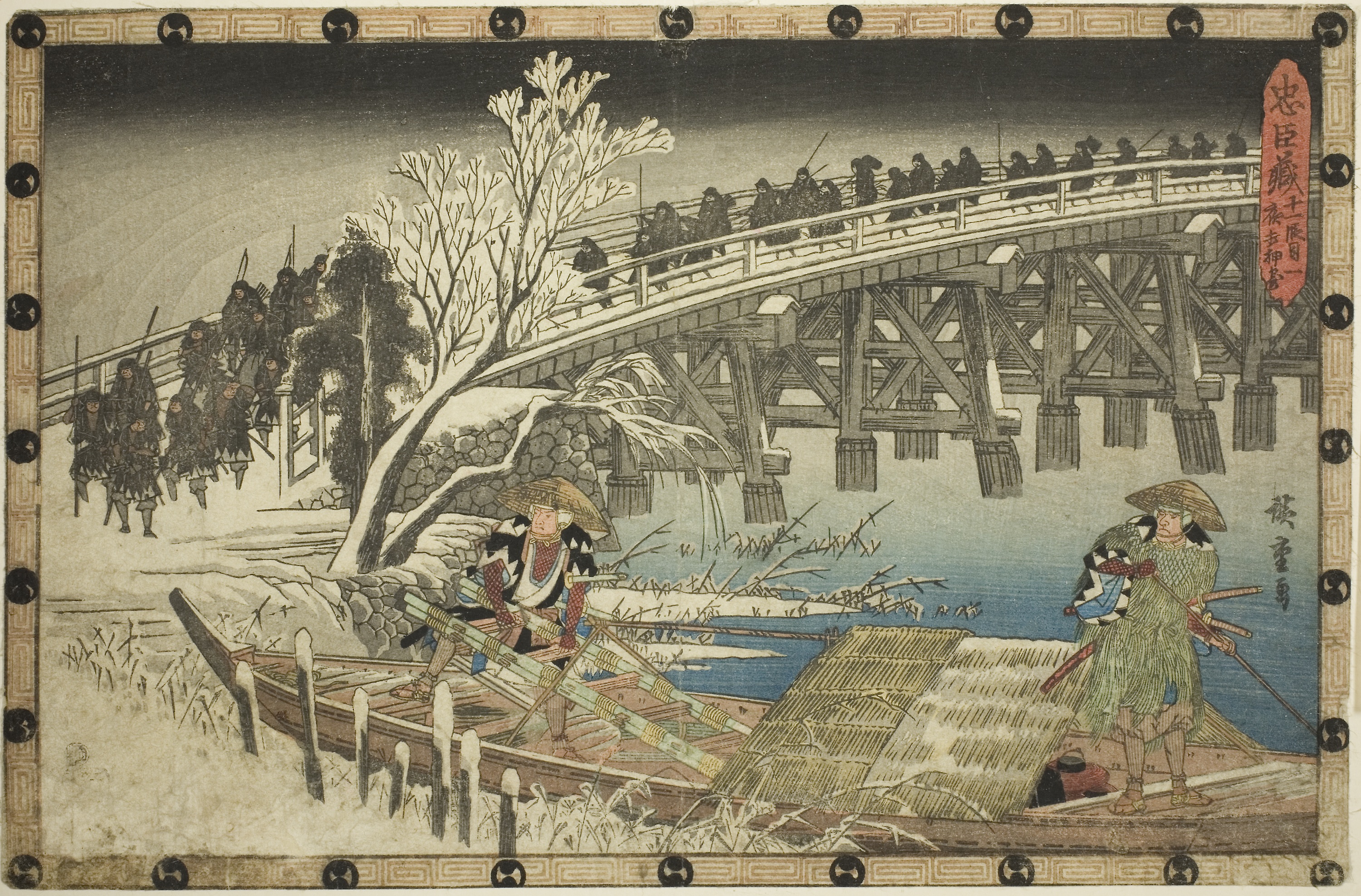Rise to Power

Conflict with Imagawa
Imagawa Yoshimoto was a long-time opponent of Nobunaga's father, and had sought to expand his domain into Oda territory in Owari. In 1560, Imagawa Yoshimoto gathered an army of 25,000 men, and started his march toward the capital city of Kyoto, with the pretext of aiding the frail Ashikaga Shogunate. The Imagawa forces quickly overran the border fortresses of Washizu and Matsudaira forces led by Matsudaira Motoyasu took Marune Fortress. Against this, the Oda clan could rally an army of only 2,000 to 3,000 men. Some of his advisors suggested "to stand a siege at Kiyosu" but Nobunaga refused, stating that "only a strong offensive policy could make up for the superior numbers of the enemy", and calmly ordered a counterattack against Yoshimoto. In June 1560, Nobunaga's scouts reported that Yoshimoto was resting at the narrow gorge of Dengaku-hazama, ideal for a surprise attack, and that the Imagawa army was celebrating their victories of Washizu and Marune fortress. While Yoshimoto viewed victory ahead, Nobunaga’s forces soon arrived at the Zensho-ji, a fortified temple overlooking the Imagawa forces camp site. Nobunaga ordered his men to set up an array of flags and dummy troops made of straw and spare helmets around the Zensho-ji, giving the impression of a large host, while the real Oda army hurried round in a rapid march to get behind Yoshimoto's camp. The heat gave way to a terrific thunderstorm, and as the Imagawa samurai sheltered from the rain, Nobunaga deployed his troops at Kamagatani. When the storm ceased, they charged down upon the enemy. At first, Yoshimoto thought a brawl had broken out among his men, but then he realized that it was an attack when two of Nobunaga's samurais, Mōri Shinsuke and Hattori Koheita, charged up at him. One aimed a spear at him, which Yoshimoto deflected with his sword, but the second swung his blade and decapitated him. With his victory in this battle, Oda Nobunaga gained greatly in prestige, and many samurai and warlords pledged fealty to him. This would go on to be known as The Battle of Okehazama.
Mino campaign
In 1561, Saitō Yoshitatsu, an enemy of the Oda clan, died suddenly of illness and was succeeded by his son, Saitō Tatsuoki. However, Tatsuoki was young and much less effective as a ruler and military strategist compared to his father and grandfather. Taking advantage of this situation, Nobunaga moved his base to Komaki Castle and started his campaign in Mino, and defeated Tatsuoki in both the Battle of Moribe and the Battle of Jushijo in June that same year. By convincing Saitō retainers to abandon their incompetent and foolish master, Nobunaga significantly weakened the Saitō clan. In 1564, Oda Nobunaga dispatched his retainer, Kinoshita Tōkichirō, to bribe many of the warlords in the Mino area to support the Oda clan. In 1566, Nobunaga charged Kinoshita to build Sunomata Castle on the bank of the Sai River opposite Saitō territory, to serve as a staging point for the Oda forces, and to intimidate, surprise and demoralize the enemy. In 1567, The Mino Triumvirate was commanded by three samurai generals serving the Saitō clan: Inaba Ittetsu, Andō Michitari, and Ujiie Bokuzen. The triumvirate agreed to change sides and join the forces of Oda Nobunaga. Their combined forces mounted a victorious final attack at the Siege of Inabayama Castle. After taking possession of the castle, Nobunaga changed the name of both Inabayama Castle and the surrounding town to Gifu. Nobunaga revealed his ambition to conquer the whole of Japan, and also started using a new personal seal that read Tenka Fubu, which means "All the world by force of arms" or "Rule the Empire by Force". Remains of Nobunaga's residence in Gifu can be found today in Gifu Park.
March on Kyoto
Following Nobunaga's conquest of Mino in 1567, in an effort to cement an alliance between Nobunaga and rival warlord Azai Nagamasa from Omi Province, Nobunaga arranged for Oichi, his sister, to marry Nagamasa. Nobunaga desired peaceful relations with the Azai clan because of their strategic position in between the Oda clan's land and the capital, Kyoto. In 1568, Ashikaga Yoshiaki and Akechi Mitsuhide, as Yoshiaki's bodyguard, went to Gifu to ask Nobunaga to start a campaign toward Kyoto. Yoshiaki was the brother of the murdered 13th shogun of the Ashikaga Shogunate, Yoshiteru, and wanted revenge against the killers who had already set up a puppet shogun, Ashikaga Yoshihide. Nobunaga agreed to install Yoshiaki as the new shogun, and grasping the opportunity to enter Kyoto, started his campaign. An obstacle in southern Ōmi Province was the Rokkaku clan, led by Rokkaku Yoshikata, who refused to recognize Yoshiaki as shogun and was ready to go to war to defend Yoshihide. In response, Nobunaga launched a rapid siege of Chōkō-ji Castle, driving the Rokkaku clan out of their castles. Other forces led by Niwa Nagahide defeated the Rokkaku on the battlefield and entered Kannonji Castle, before resuming Nobunaga's march to Kyoto. Later in 1570, the Rokkaku tried to re-take the castle, but they were driven back by Oda forces led by Shibata Katsuie. The approaching Oda army influenced the Matsunaga clan to submit to the future shogun. The daimyo Matsunaga Hisahide kept his title by making this decision to ally his clan with the shogun. On November 9, 1568, Nobunaga entered Kyoto, drove out the Miyoshi clan, who fled to Settsu, and installed Yoshiaki as the 15th shogun of the Ashikaga Shogunate. However, Nobunaga refused the title of shogun's deputy (Kanrei), or any appointment from Yoshiaki. As their relationship grew difficult, Yoshiaki secretly started an anti-Nobunaga alliance, conspiring with other daimyos to get rid of Nobunaga.